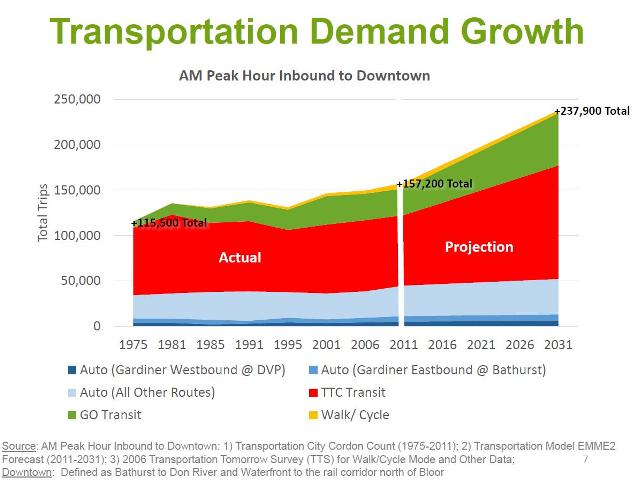Except, for, you know, the report which was submitted to council in February of this year..
Over $500 million has already been spent by the city on Gardiner East.
None of what I am saying is an "uninformed opinion". At all.
Gardiner East "hybrid" was estimated to have a capital cost of $414 million and $505 million for operations and maintenance over the anticipated 100-year lifecycle. So a total of $919 million.
Gardiner east "removal" was estimated to have a cost of $326-million in up front in capital costs and $135-million for operations and maintenance costs over the anticipated 100-year lifecycle. So a total of $426 million.
So sure, Removal would have saved $458 million, over
100 years. But we have already spent $350 million+ now which would be "throwaway".
Returning to the "hybrid" option would likely increase short term capital costs as there was only a difference of $88 million in up front capital costs between the two.. Lots of cost escalation has occurred since then increasing costs, but I imagine not so much as to offset the $350 million we would be throwing away by switching now.
The city has made the decision on the matter. The city has spent hundreds of millions on it, including roughly half of the entire Gardiner East project. It's literally half-built. Switching now would throw away all of money spent so far, and negate the original cost savings of demolition.
I will repost a previous comment I made in this forum.
"sunk cost fallacy. There is no capital amount we could spend on reconstructing the Gardiner where it would cease to still be overwhelmingly positive to take it down. Reduce emissions, vehicle deaths, emergency response cost to crashes, thousands of new homes, millions in property tax, hundreds of millions (forever) in new economic activity. There is no debate, this has been proven worldwide, Toronto is just insufferably reactionary"
Ignoring the fact that continuing to poorly invest money into something because of a previous mistake makes no sense, this problem cannot be calculated with a simple addition and subtraction of capital costs.
Yet even if we are to take the initial capital cost as the be all end all of this debate, then the way to recapture the bad investment spent on the Jarvis-Cherry rebuild is to commit to a boulevard/teardown option for the entire Gardiner east of Strachan Ave. This rebuild is all set to occur within the decade and will cost the city at least an additional $370 million*, saving which would nullify the $350 million already spent on the Jarvis rebuild. However, the portion of the Gardiner from Strachan Ave to Dan Leckie Way is elevated along what we know as the Bentway, not Lakeshore.
The footprint of the Gardiner here is roughly 373296 square feet, with a square foot of plot land for new developments in downtown Toronto averaging $300 per square foot (
https://precondo.ca/how-much-does-it-cost-to-build-a-condo/). A conservate estimate that the city would be able to sell the plot for only $260 per square foot nets the city $97056960, lets say $100 million to keep things simple. There is nearly half a billion dollars to be saved/earned for the city in properly committing to the tear down, without even considering the external long term costs/gains I mentioned in my quoted comment above. When the long term cost is added, there is absolutely no question that the teardown saves money*, regardless of what has been done from Jarvis-Cherry.
"Lots of cost escalation has occurred since then increasing costs, but I imagine not so much as to offset the $350 million we would be throwing away by switching now."
This is not something that we can give the benefit of the doubt. City staff, directed by Tory, continuously used a nearly decade old report to down play the cost of the Gardiner East rebuild which has invoked significant backlash as to how much a rebuild will actual cost the city. (
https://www.cbc.ca/news/canada/toronto/gardiner-east-cost-letter-1.6777697)
Toronto is infamous for it's infrastructure cost inflation, and the Gardiner is no exception to that. Simply hoping costs will not balloon further for this highway is not acceptable.
Ultimately, there is no reality where rebuilding an elevated highway that serves only 7%** of core commuters makes any sense, whether from a financial, social or environmental standpoint.
* (
https://www.toronto.ca/services-pay.../gardiner-expressway-rehabilitation-strategy/)
** (
https://stevemunro.ca/2014/02/06/the-gardiner-expressway-and-transit-to-downtown/)





